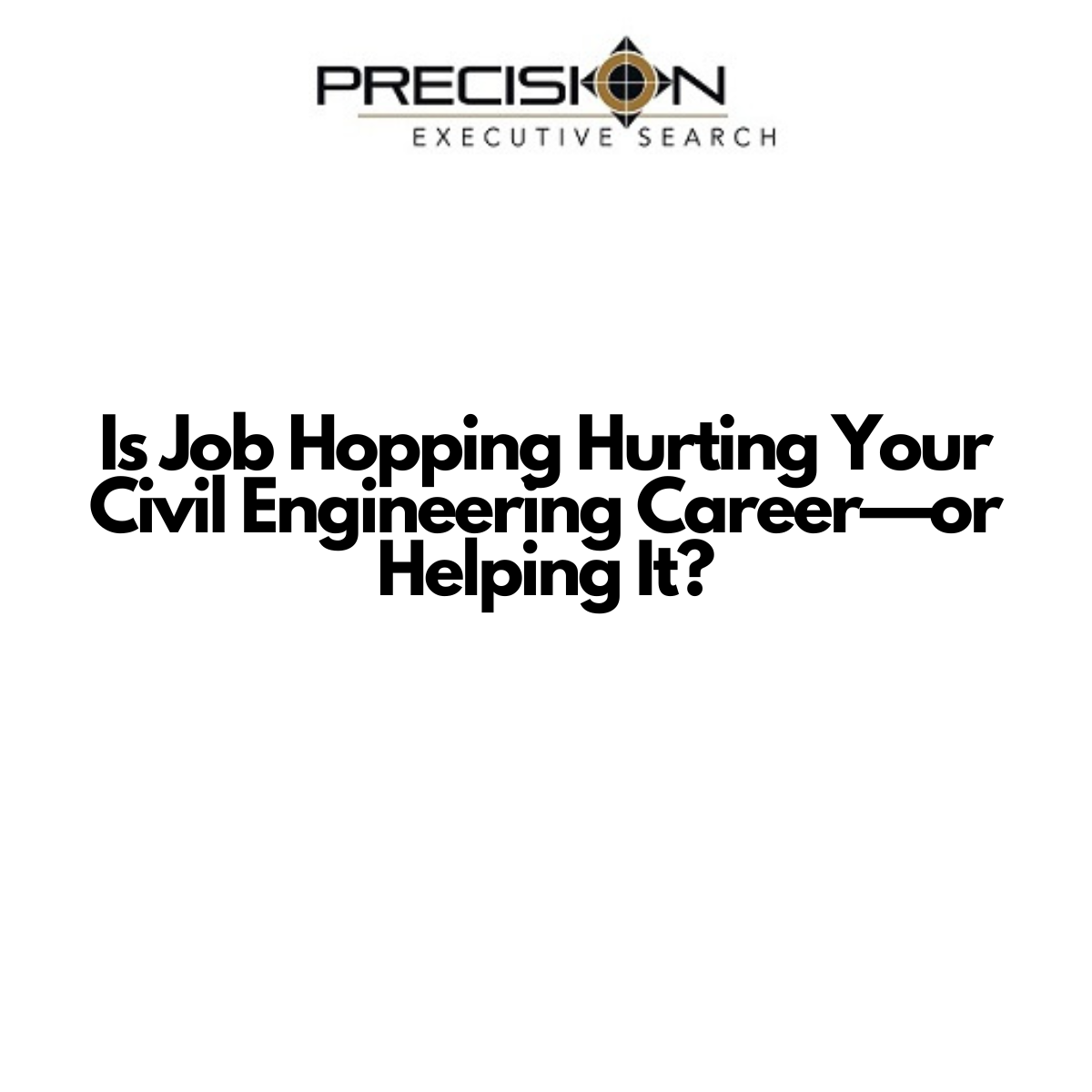
01 Aug Is Job Hopping Hurting Your Civil Engineering Career—or Helping It?
Let’s face it—civil engineering isn’t Silicon Valley. While job hopping might be standard fare in the tech world, our industry still places a premium on stability, project follow-through, and long-term client relationships. That said, the market is evolving. Firms are adjusting to a more mobile workforce, and civil engineers are more willing to explore new opportunities for better compensation, professional development, and work-life balance. So the question remains: does job hopping help or hurt your career?
The Shift in Perception Traditionally, hiring managers in civil engineering viewed multiple short stints as a red flag. It raised concerns about commitment, reliability, and whether a candidate could stick with a project from design through construction. But in today’s market, where finding and retaining top talent has become increasingly competitive, that narrative is changing.
Many firms now accept that candidates move for good reasons. Whether it’s escaping a toxic culture, chasing a better role, or simply relocating for family, recruiters and hiring managers are more open to hearing the story behind the move—as long as there’s a story.
When It Makes Sense Job hopping may actually work in your favor if:
- You’re moving into roles with increasing responsibility
- Each move fills a skill gap or expands your expertise
- The companies or projects align better with your long-term goals
Strategic mobility, when explained clearly, can showcase ambition, adaptability, and professional growth.
When It Can Backfire Frequent short-term roles with no clear progression or rationale can still hurt your credibility. Firms may worry that investing in onboarding and training won’t pay off if you’re gone in a year. And if your resume shows multiple exits before project completion, that may raise questions about your reliability.
How to Frame It Be transparent. Focus on what you gained from each role and why the next step made sense at the time. Use your resume and LinkedIn profile to show a consistent upward or lateral progression.
Final Thought It’s not about how many times you’ve moved. It’s about how well each move fits into the broader arc of your career story. Civil engineers who make intentional, well-communicated transitions often end up in stronger positions—and with more leverage.


No Comments